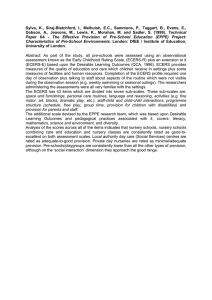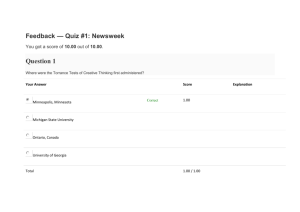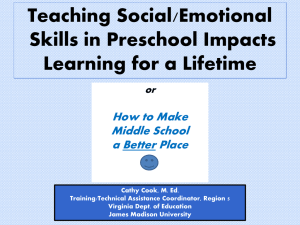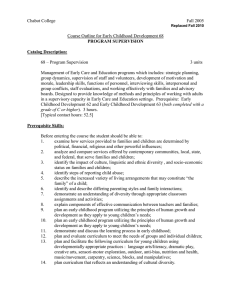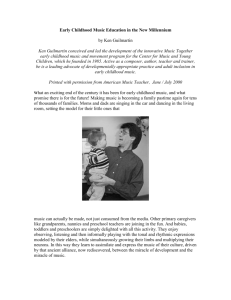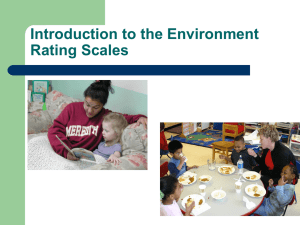What is the ECERS with notes
advertisement
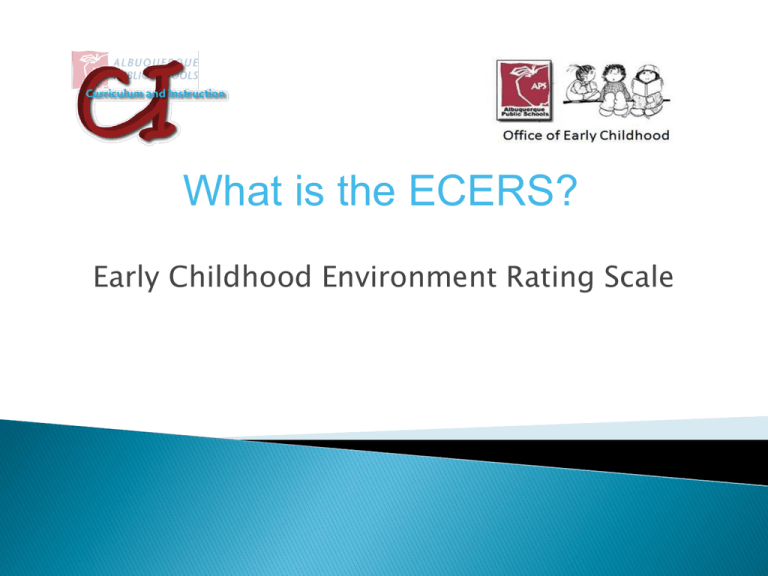
What is the ECERS? Early Childhood Environment Rating Scale Internationally recognized evidence-based quality improvement tool, specifically designed for the classroom environment. Enables setting to evaluate their environment and provision, and to identify clear steps for development in order to improve outcomes for children An observation that provides detailed and objective snapshot on the day of practice within a setting, using a range of indicators Space and furnishings Personal care routines Language and reasoning Activities Interaction Program structure Provision for parents and staff Children in classes with higher ECERS Scores have repeatedly been found to do better on outcomes that are considered very important such as: Language ability Pre-academic skills (math and reading readiness) Attitudes towards child care and perceptions of their own competence Relationships with teachers Social skills Some child outcomes are not studied, but they are still important in terms of child development Accident rates Health status Self-help skills Happiness in the early childhood program Creativity in thinking Creativity in the arts Science knowledge Social Studies Protection of children’s health and safety To build positive relationships with other children and adults that teach them Appropriate learning opportunities that meet their range of developmental needs Protection/Safety, Positive Relationships and Appropriate Learning Attention to health and safety issues Child’s sense of value and competence Young children need to develop social/emotional skills. Informed about child development and understand long-term academic success, as well as life-long success What children are supposed to know, understand and be able to do Strategies that work with older children are far less effective with young children “Every teacher possesses the power to transform the quality of life and learning in themselves and in their students at any time “ - (Brewer & Campbell, 1991, p. 225) Instructions for Intersecting Interests: 1.Teachers will think of a specific center in their classroom 2.Teachers will work in pairs 3.Answer each question and respond as a child, a parent, an administrator. 4.Utilize New Mexico Early Learning Outcomes and District Standards Jigsaw Protocol 1.Give each participant or pair of participants a short section to read in the article 2.Allow time for participants to read 3.Participants will raise questions they have, highlight the key findings and determine what they will share with the whole group. 4.Each group will share information from section of the reading.
